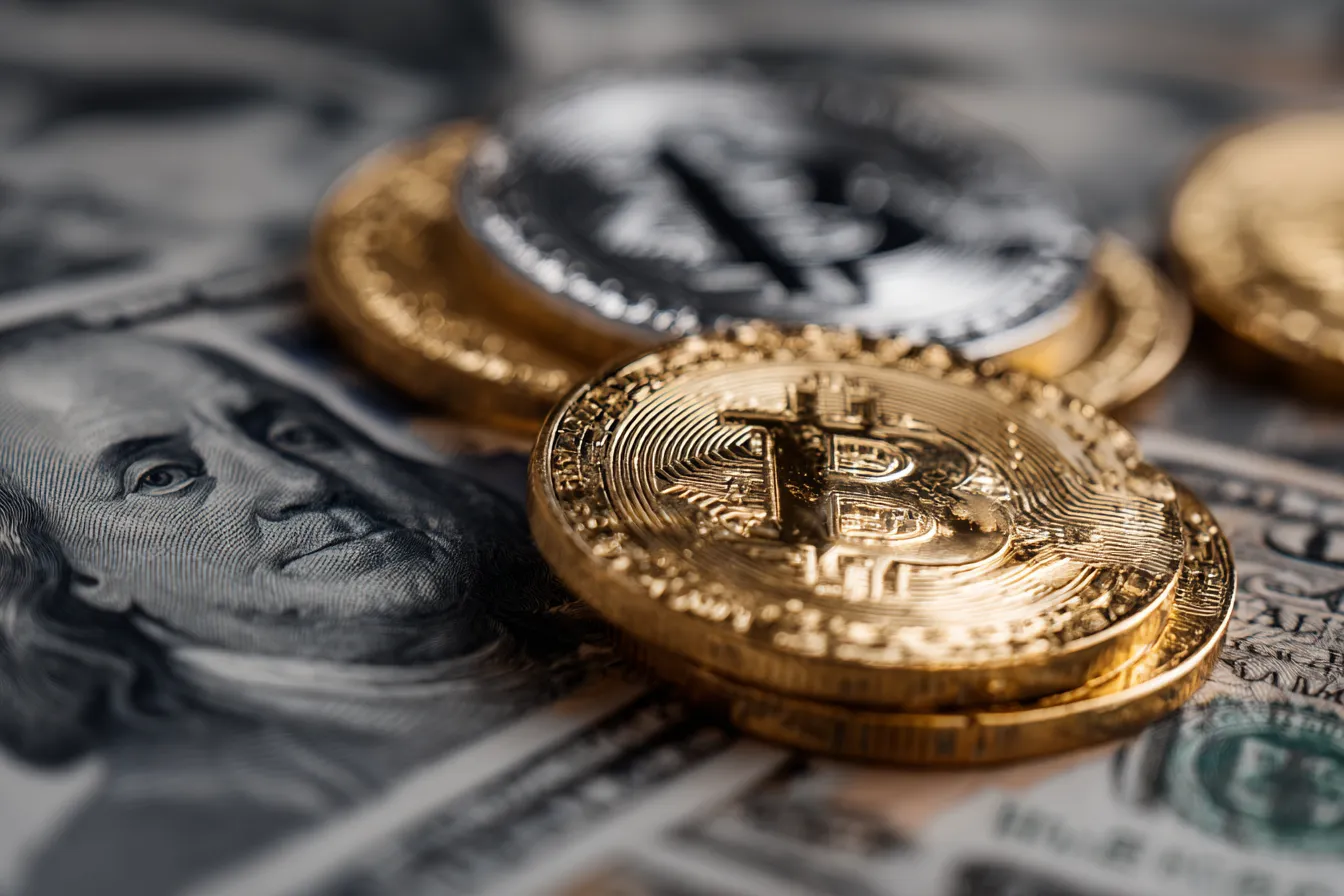Bitcoin vs. Dollar Debate Deepens on Record Global Money Supply



A measure of the global money supply has notably hit an unprecedented level of $55.48 trillion.
Multiple elements influence this rise, including central bank measures aimed at boosting economic activity and, more recently, a surge in bank lending.
The increase in money supply has ignited conversations regarding possible inflationary pressures and the responsibilities of central banks in steering economic growth.
Beyond the usual juggernaut of macro readings, the other hot debate from this record increase in money supply is Bitcoin versus the dollar.
The basic premise of the assets properties brings this discussion to the forefront when the money supply is surging.
An increase in global money supply suggests central banks are printing more money, which is usually negative for fiat currencies.
Bitcoin runs on a distributed network, while the Federal Reserve can print dollars whenever it wants.
The inherent nature of these assets couldn't be more different: the quantity of Bitcoin supply rate sees a diminishing pace—now below 1 percent annually—while the value of the dollar is steadily declining due to regulations that aim to control inflation at 2 percent per year.
The issuance of Bitcoin is on the decline, and its total supply is limited.
The persistent rise in inflation significantly diminishes the purchasing power of the dollar, which has no upper limit and has depreciated by more than 96 percent in value over the past hundred years.
The price of Bitcoin exhibits significant volatility, often experiencing drastic fluctuations within just a few days.
On the other hand, the dollar exhibits notable stability in the near term, yet it experiences a gradual decrease in real value amid inflationary conditions.
The US dollar serves as legal tender and enjoys widespread acceptance across various markets and central banks as a reserve asset.
Bitcoin, though, is not recognized as an official currency in many countries.
Yet millions own it as a financial asset, and the OG token is now regarded as a reserve asset by certain governments, including the US.
From a financial perspective, Bitcoin’s returns have significantly exceeded those of the dollar. This year, Bitcoin is valued at approximately $110,000, marking an all-time high.
This level of growth is unprecedented for any traditional currency; merely holding cash cannot yield such returns.
Naturally, significant returns often come with considerable risks.
The history of Bitcoin is characterized by significant volatility.
Following its peak close to $69,000 in late 2021, BTC experienced a significant decline of over 70 percent through the 2022 bear market.
These fluctuations can significantly influence a portfolio's performance.
The dollar, on the other hand, maintains a level of stability—$1remains $1 in nominal terms. Nevertheless, maintaining cash over an extended period will diminish wealth due to inflationary pressures.
Capital can generate returns, which help mitigate the effects of inflation.
Bitcoin does not generate interest or dividends; any potential returns are exclusively derived from increases in its price.
The OG token presents a significant risk with the potential for substantial returns, while cash in dollars offers stability but is likely to gradually diminish in value over time unless allocated effectively.
Now, how does that play out when global money printing is setting off a liquidity bomb?
Historically, Bitcoin tends to exhibit a delayed response, typically manifesting 3 to 6 months after significant money supply breakouts.
For instance, in April 2025, BTC surged by 30% within two weeks following an M2 (money supply) spike.
On the other hand, the greenback seems to be in a death spiral, with the widely followed dollar index—a gauge of the US currency against a basket of its peers—down nearly 11% in 2025.
This year marks the dollar's worst performance since the collapse of the Bretton Woods system in 1971-1973.
One more intriguing trend is the negative correlation between Bitcoin and the dollar.
The OG token has taken off this year, up over 17%, and seems to point to a critical divergence as seen in November 2022, which fueled an over 300% rally in Bitcoin.
That scenario appears to be unfolding now.
With the price of Bitcoin predicted to have a higher direction of least resistance, the diverging path with the dollar is likely to intensify even more.
It remains to be seen whether Bitcoin's surge to new all-time highs will significantly impact the dollar as the money supply continues to grow.
Elsewhere
Blockcast
Ripple's Journey: From Payments to Financial Solutions
This week, host Takatoshi Shibayama interviews Eric van Miltenberg , SVP of Strategic Initiatives at Ripple, discussing the APEX 2025 conference, Ripple's evolution from a payment-focused company to a broader financial solutions provider, and the future of the crypto industry.
They explore the similarities between the internet boom and the current blockchain landscape, the importance of regulatory clarity, and the potential of tokenization in various sectors. Eric shares insights on Ripple's strategic acquisitions and the company's commitment to addressing real-world problems through innovative technology.
Blockcast is hosted by Head of APAC at Ledger, Takatoshi Shibayama . Previous episodes of Blockcast can be found here , with guests like Davide Menegaldo (Neon EVM), Jeremy Tan (Singapore parliament candidate), Alex Ryvkin (Rho), Hassan Ahmed (Coinbase), Sota Watanabe (Startale), Nic Young (Oh), Jacob Phillips (Lombard), Chris Yu (SignalPlus), Kathy Zhu (Mezo), Jess Zeng (Mantle), Samar Sen (Talos), Jason Choi (Tangent), Lasanka Perera (Independent Reserve), Mark Rydon (Aethir), Luca Prosperi (M^0), Charles Hoskinson (Cardano), and Yat Siu (Animoca Brands) on our recent shows.

Blockhead is a media partner of Coinfest Asia 2025. Get 20% off tickets using the code M20BLOCKHEAD at https://coinfest.asia/tickets .

Bit Digital Goes All-In on Ethereum, Accumulates Over 100K ETH in Major Treasury Shift
Public company raises $172 million and converts entire Bitcoin position to Ethereum, becoming one of...

Bitcoin Volume Hits Yearly Low – Why ETF Support Keeps Us Aggressively Positioned
Your daily access to the backroom....

Dubai's First Tokenized Money Market Fund Receives DFSA Approval in QNB-DMZ Finance Partnership
QCD Money Market Fund (QCDT) becomes first officially approved tokenized money market fund in Dubai ...

